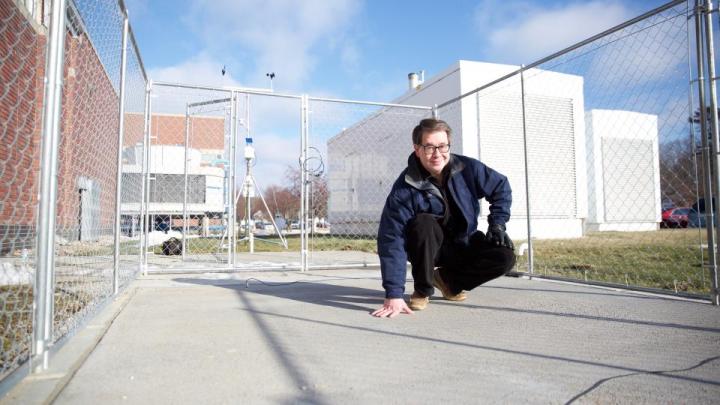
The man who invented this new material, Chris Tuan, is a professor of civil engineering at the University of Nebraska-Lincoln, where he led a research team to develop the new concrete. About 80 percent of Tuan’s new concrete is a standard mixture, while the other 20 percent is composed of elements like steel shavings and carbon particles. The steel shavings and carbon particles interact when an electric current is introduced to the hardened concrete mixture. Together, they conduct just the right amount of electricity to melt away ice and snow, without posing any kind of safety threat.
Even while conducting the charge, the concrete is still safe to touch. The research team has already been working to perfect the concrete solution for over a decade. In 2002, the Nebraska Department of Roads authorized a 150-foot test space for Tuan’s concrete. It spanned the length of Nebraska’s Roca Spur Bridge, and took 52 slabs of conductive concrete to complete. For over ten years, the bridge zapped away dangerous driving conditions every winter, without fail.
Tuan says that bridges are a perfect test condition for the conductive concrete: “Bridges always freeze up first, because they’re exposed to the elements on top and bottom.” With just a few slabs of Tuan’s concrete in strategically placed locations, cities and regional governments would be able to keep roads safer and keep costs low. De-icing the Roca Spur Bridge during a three-day storm racks up a cost of about $250, which is still considerably lower than the price of all the chemicals that would be necessary to power-salt the bridge.
The conductive concrete is currently in an important testing phase with the Federal Aviation Administration. De-icing the tarmac surrounding grounded planes would reduce airport delays considerably, since supply vehicles suffer from dangerous ground conditions more than airplanes. When the FAA completes their tests in March 2016, a favorable result would allow for concrete testing on a much larger scale. By the end of this year, conductive concrete could even be in place on the tarmac of some major US airports.


